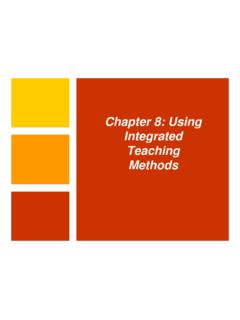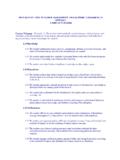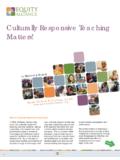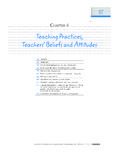Transcription of CSP Structure/Guide/Fidelity Items - Connecticut
1 CSP Structure/Guide/Fidelity Items Community Support Program (CSP) consists of mental health and substance abuse rehabilitation services and supports necessary to assist the individual in achieving and maintaining the highest degree of independent functioning. The service utilizes a team approach to provide intensive, rehabilitative community support, crisis intervention, group and individual psycho-education, and skill building for activities of daily living. CSP includes a comprehensive array of rehabilitation services most of which are provided in non- office settings (50% in the community) by a mobile team. Services are focused on skill building with a goal of maximizing independence. Community-based treatment enables the team to become intimately familiar with the participant's surroundings, strengths and challenges, and to assist the participant in learning skills applicable to his/her living environment. The team services and interventions are highly individualized and tailored to the needs and preferences of the individual.
2 CSP services focus on building and maintaining a therapeutic relationship with the individual while delivering rehabilitative, skill building interventions and activities, facilitating connections to the individual's community recovery supports, providing access to a Certified Peer Support Specialist (AU. certified) who is specially trained and can provide effective self-help strategies and expertise through their lived experience, targeted case management (TCM) and emphasizing the individual's choices, goals and recovery path. fidelity Scale Item # Notes Domain 1 -Staffing #1 Certified Recovery Support Need to be AU certified; if not certified by AU, score = 1. Specialist #2 CSP Team Availability These hours should be listed on your agency's CSP Member Handbook and Brochure; CSP team operates at least 10 , 5 days/week; available for scheduled evening/weekend appointments as needed. Teams should ensure that CSP individuals are aware of these hours. Agencies do not need to staff their clinics for additional hours with secretaries, clinicians and other staff to meet this requirement.
3 CSP staff working the extended hours can be in the community meeting with individuals, looking for individuals that are missing or not yet engaged, and/or doing paperwork at another location (not home). # 3 of FTE's Capacity/20 =expected # of FTE's. # 4 CSP Team Meetings These meetings could be hour in length and are often called morning meetings . It may be that not all staff can be at all of these meetings, given the extended hours' schedule. These meetings can take place by conference call. These meetings are different than group supervision meetings. The agenda for these routine weekly meetings can include daily update on current individual issues, week in review, weekend or emergency individual's concerns, daily schedules, and case presentations. The agenda is generally around supporting each other and working in concert. The CSP team must meet together at least 2 times weekly in order to meet fidelity for this item. # 5 Supervision In order to meet CSP requirement each CSP staff member should receive over hours of supervision monthly ( could be a mix of individual /group).
4 Supervision: Basic Principles: 1. Supervision focuses on the counselor* and not on the individual, 2. It occurs within the relationship between the counselor and the supervisor, 1. 3. It asks the questions, what does the counselor want/need and how can I, as the supervisor, help , 4. It addresses obstacles and roadblocks that may be hampering the relationship between the counselor and the individual, 5. It addresses models, techniques, and implementation of the evidence- based practices endorsed by the agency, 6. It defines and supports ethical practices, 7 .It clarifies and supports training initiatives, and 8. It builds on the strength of the counselor. * Counselor is broadly defined as a staff member who works directly with individuals in a helping or support role. He/she can be a licensed mental health professional, a recovery specialist, case manager, residential counselor, etc. Reviewers will ask for a supervision log or other documentation ( , agendas) during the fidelity review that shows evidence of the frequency and content of the individual and group sessions.
5 Domain 2 Service Intensity & Program Supervisors should have access and review the EDW Reports Location (Service Utilization and Location, Service Intensity (Client Contacts) Reports are available quarterly. Expectation is 55% staff productivity. FTE ~ hrs. /week F2F client contact. #6 CSP In-vivo services At least 50% of total face-to-face service hours occur in the community.(Source: EDW report-Service Utilization and Location- Community). # 7 Clients with 0 F2F contacts Expected # of clients enrolled for entire quarter receiving 0 services meet the benchmark (less than 7%). (Source: EDW report-Service Intensity report (Client Contacts)- (Clients with 0 F2F contacts). Program staff with access to EDW can click on the hyperlink where the number is designated to access a list of the clients that did not have any contacts. # 8 CSP Capacity Program served at least the number of CSP clients that their contracted/agreed upon capacity indicates. (Source: EDW report- Service Utilization and Location -Capacity/Undup.)))
6 Clients). This report captures individuals that were admitted and discharged throughout the quarter. # 9 CSP Overall Hours/Staff Program delivered at least the expected number of face-to-face CSP service Productivity hours overall that their contracted/agreed upon capacity indicates. ( FTE~ hours x 55% productivity= hours per FTE X # of FTES's x 12 weeks(quarter) =expected hours per quarter) (Source: EDW report: Service Utilization and Location report)- Total Face-to Face(rehab/TCM) Svc Hrs hours Domain 3 Documentation, Treatment Planning #10 &11 Functional Admission -full FA (DMHAS approved) . The frequency should be upon Assessment admission (within 90 days) or more often based on changing needs and/or establishment of a new rehab goal). If using the DLA-20, please include the Self Advocacy/Rights domain. The full FA's Functional skills assessments need to be fully completed and accurate which include: 1) LOAs completed;. 2) Summary page and integrated summary included on full FA's.
7 In terms of the functional assessment (FA) update, there is flexibility in how 2. this can be accomplished. There is an optional DMHAS FA Update template on the DMHAS website. Two of the Champions developed alternative FA. Update templates that you can use. The FA update could be an expanded progress note that documents in some detail the updated FA assessment information and how that links to the updated treatment/recovery plan. In addition, you could document on the recovery plan review that the FA was reviewed/updated to inform the recovery plan update. The charts reviewed during a fidelity review must show evidence of this. # 12-15 Individualized Goals in IRP are recovery life goals and in the client's own words Recovery Plan (IRP) Each client has an IRP with the following structure : 1) target dates for objectives 2) identified persons/positions assigned to action steps;. 3) frequency, intensity and duration of interventions 4) inclusion of person in recovery and natural supports, as appropriate Each client has an IRP with the following content-related pieces: 1) Identification of strengths & barriers (including from FA).
8 2) Objectives are measurable;. 3) Skill-building language is used in some interventions 4) TCM is included, if needed Each recovery plan is reviewed & updated every 90 days ** If any of the subcomponents of these Items are missing in all charts reviewed, the rating will be a one 1 for the relevant fidelity scale Items . # 16 Encounter Notes Encounter noted should follow the GIRP format (Goal/Objective, Intervention, Response, Plan (what the next steps will be). Notes should show evidence that the "G/O" for goal/objective should reference back to the IRP and not for the "goal for the day". Encounter notes should include: 1) interventions relate to goals & objectives in IRP;. 2) Interventions written in behavioral terms specifying teaching, coaching, cueing, etc.;. 4) date, start/end time 5) location of service;. 6) staff sign, date & credentials. If staff are documenting a lot of notes for a specific goal/objective and it is not on the IRP they should be updating the IRP earlier than the 90 day requirement.
9 Domain 4 Interventions # 17 Stages of Change Stage of change is assessed and interventions are appropriately matched. Charts should show evidence of stagewise services and staff should be able to articulate appropriate matching strategies. See chart below on next page: 3. Stages of Change Stage of Tx Interventions Precontemplation * Develop a working-together relationship * Remain positive and optimistic * Remember that engagement does not equate to enabling* Use Motivational Interviewing to Express Empathy Does not see substance and Establish Personal Goals * Provide practical assistance * Reduce harmful consequences use or mental health * Provide outreach if necessary *Listen for ambivalence about problem behavior * Reflect issue as a problem, is Engagement individual's statements of the downside of problem behavior * Learn how individual's unwilling to change, or experiences life now and how this is different from hopes and aspirations *Increase awareness feels unable to change.
10 Of the problem* Express benefits of change* Don't push treatment *. Contemplation *Individual's will think a lot and say a lot, but may not do a lot * Be aware that individuals are weighing the pros and cons of problem behavior* Avoid the Righting Reflex by not offering Has become aware that advice or correcting misperceptions * Use Motivational Interviewing for Developing substance use/mental Discrepancy between problem behavior and individual's goals/values * Provide information health issue is a Persuasion about substance use/mental health and benefits of treatment * Use individual MI, Persuasion problem and is Groups, and Family interventions * Use Motivational Interviewing to Support Self-efficacy, to ambivalent about change Avoid Arguments, and Roll with the Resistance * Assure individual that ambivalence is normal * Use Decisional Balance worksheet *. Preparation * Use Motivational Interviewing to Support Self-efficacy * Teach about alcohol, drugs, mental health, activities that promote health and wellness * Improve social support * Refer to therapy, Made the decision to self-help groups * Offer skills training/CBT * Reach out and support families * Encourage change soon and is commitment to change * Generate a plan and set-up action goals * Support small steps toward developing a growing Persuasion change to test the waters * Reinforce small successes and problem-solve ways to handle commitment to change.


















